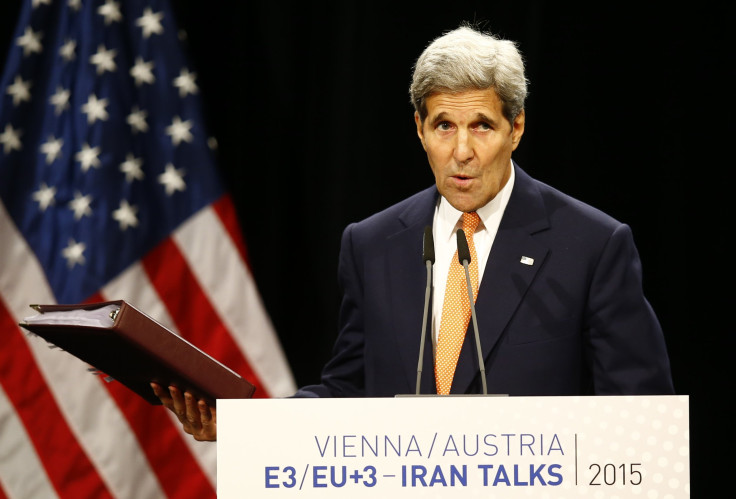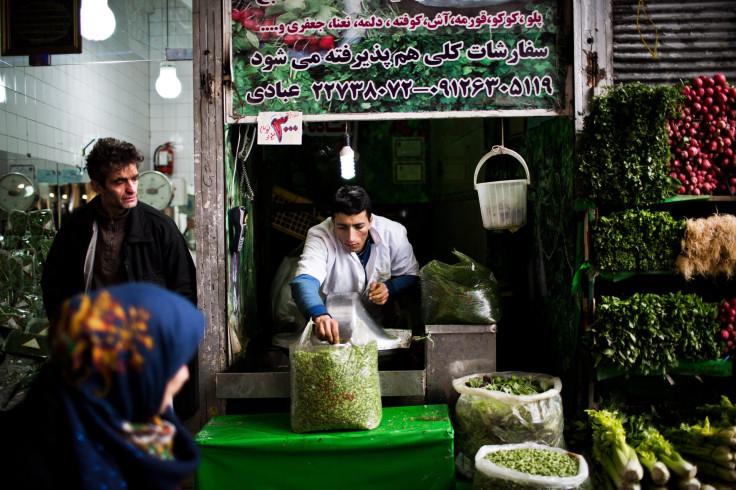What Sanctions Against Iran Won’t Be Lifted? Bans For Terrorism Support, Human Rights Abuses To Remain Intact

Iranians heaved sighs of relief at the news that nearly a decade of international economic sanctions that have crippled their economy would be lifted as part of an historic deal reached early Tuesday. Under the terms of the agreement, Iran would submit to limitations on and inspections of its nuclear program in exchange for an end to devastating sanctions that effectively isolated Iran from the global economy.
But although Iranian oil, alongside other goods, would once again flow on the global market, and banks and companies could begin to renew business with their counterparts in the Islamic Republic, the deal between Iran and the so-called P5+1 did not peel back all of the many layers of sanctions against the country. A number of key restrictions against the country, particularly those related to terrorism and human rights, remain in place.
“Certain sanctions related to Iran’s support of terror, human rights and weapons program will remain intact,” Farhad Alavi, a lawyer in Washington, D.C., who is an expert in sanctions law, said in an email. “Many parts of the U.S. sanctions infrastructure against Iran predate the nuclear issue,” he added.
POTUS says the U.S. will maintain sanctions related to Iran's support for terrorism, ballistic missile program, & human rights violations.
— Shawna Thomas (@ShawnaNBCNews) July 14, 2015U.S. sanctions against Iran date as far back as to 1979, when President Jimmy Carter seized Iranian property in the United States after a mob overtook the U.S. Embassy in Tehran and took more than 60 Americans hostage. After Hezbollah, a group in Lebanon that is backed by Iran, bombed a Marine compound in Beirut in 1983, killing 241 Americans, President Ronald Reagan added Iran to the list of State Sponsors of Terrorism, according to a report published in June by the Belfer Center for Science and International Affairs at the Harvard Kennedy School in Massachusetts. Inclusion on that list automatically results in bans on arms sales and foreign assistance to a country, and Iran was almost certain to remain on that list, even after a deal, the report noted.
In 1995, new sanctions banned all U.S. investment in Iran, including in the oil sector, and it forbade exporting American goods to Iran. These sanctions would generally remain in place even with Tuesday’s deal, with a few exceptions, namely the sale of civilian aircraft to Iran, along with certain imported luxury goods, Alavi said. Iranian pistachios and caviar, along with carpets, were among those fine goods listed in the text of the deal.
AAAH! The U.S is lifting the Iranian Sanctions! YES! This has just made my work life SO MUCH easier, no more U.S Persian Carpet Embargo!
— Alwyn (@AlwynFJH) July 14, 2015Otherwise, relief from sanctions that would revive international trade and commerce with Iran would be tied primarily to the European Union, and not to direct business between the United States and Iran, for the most part. “The European Union will much more aggressively scale back its sanctions framework,” Alavi pointed out. “The EU's repeals will arguably broaden the scope of permissible activity for EU citizens far more than the U.S. will for U.S. persons.”
Major multilateral sanctions against Iran began in 2006, when the United Nations Security Council issued a resolution that banned exporting or providing equipment and technology to Iran that could help contribute to its development of a nuclear weapon. It also froze the assets of individuals and companies considered involved in programs to build nuclear or ballistic missiles and gradually expanded that list in subsequent years.
In 2012, the European Union implemented a full embargo on Iranian oil, froze the assets of Iran’s central bank and cut off many Iranian banks’ access to the international financial system.

Under Tuesday's deal, members of the European Union agreed to lift sanctions in finance, banking and insurance; oil and gas; shipping and transport; and other sectors, while also unfreezing the assets of Iranian banks, including the Central Bank of Iran, individuals and other organizations, according to the deal’s Annex on sanctions.
The United States committed specifically to “effectuate the termination of, [sic] all nuclear-related sanctions,” but it specified a key limitation as a stipulation of this process, namely that now the sanctions on doing business Iran “would not apply to non-U.S. persons.” In other words, Americans were still subject to them, even if they could be skirted by going through third-parties, such as those in Europe.
Two other key restrictions that remain are embargoes on exporting arms and missiles to Iran, which would remain intact for five years and eight years, respectively, and apply to all members of the United Nations. The question of this embargo had been a sticking point during the final days of negotiations, until Iran agreed not to design and test warheads that would be important to the development of a nuclear weapon, the New York Times reported.
© Copyright IBTimes 2024. All rights reserved.






















